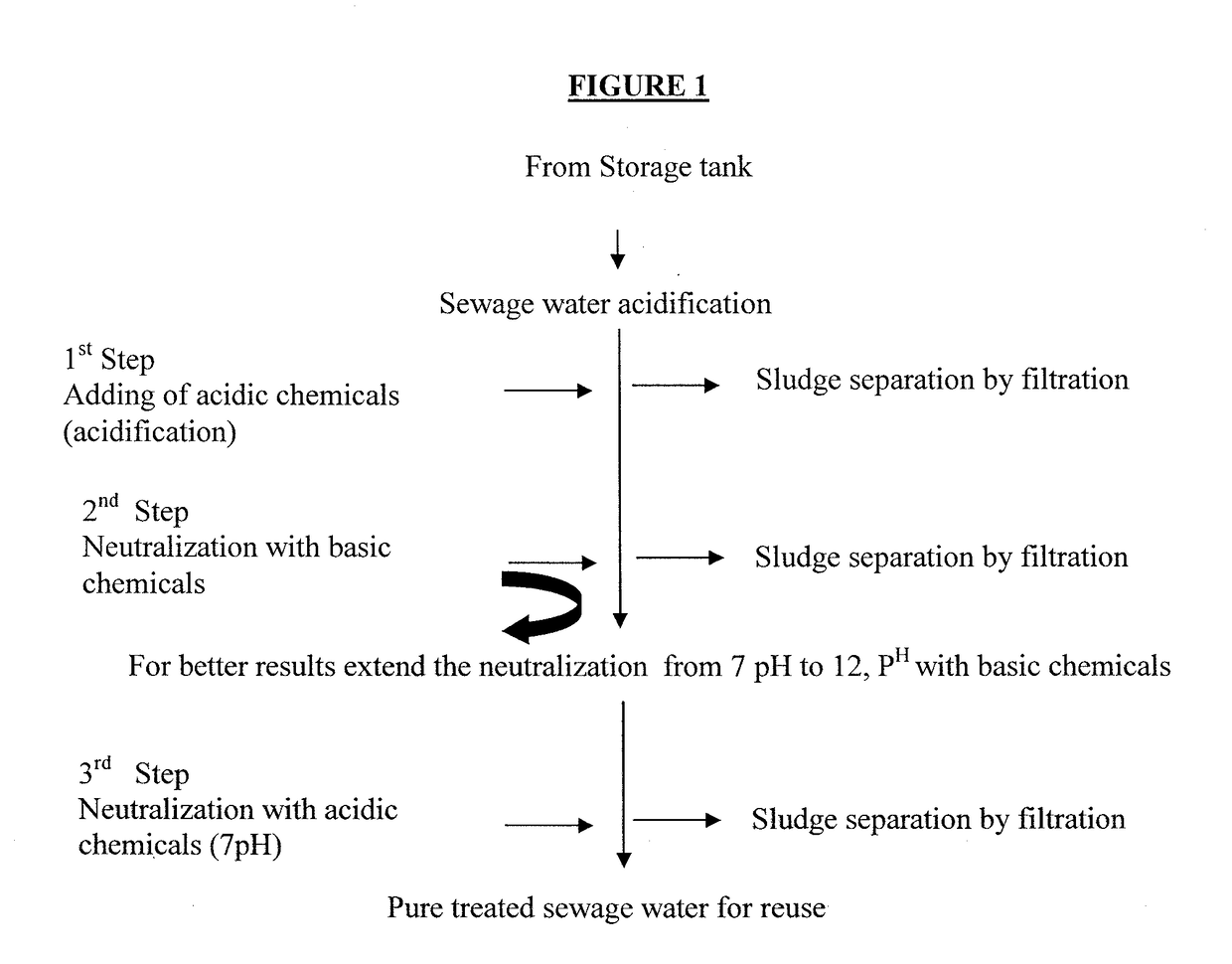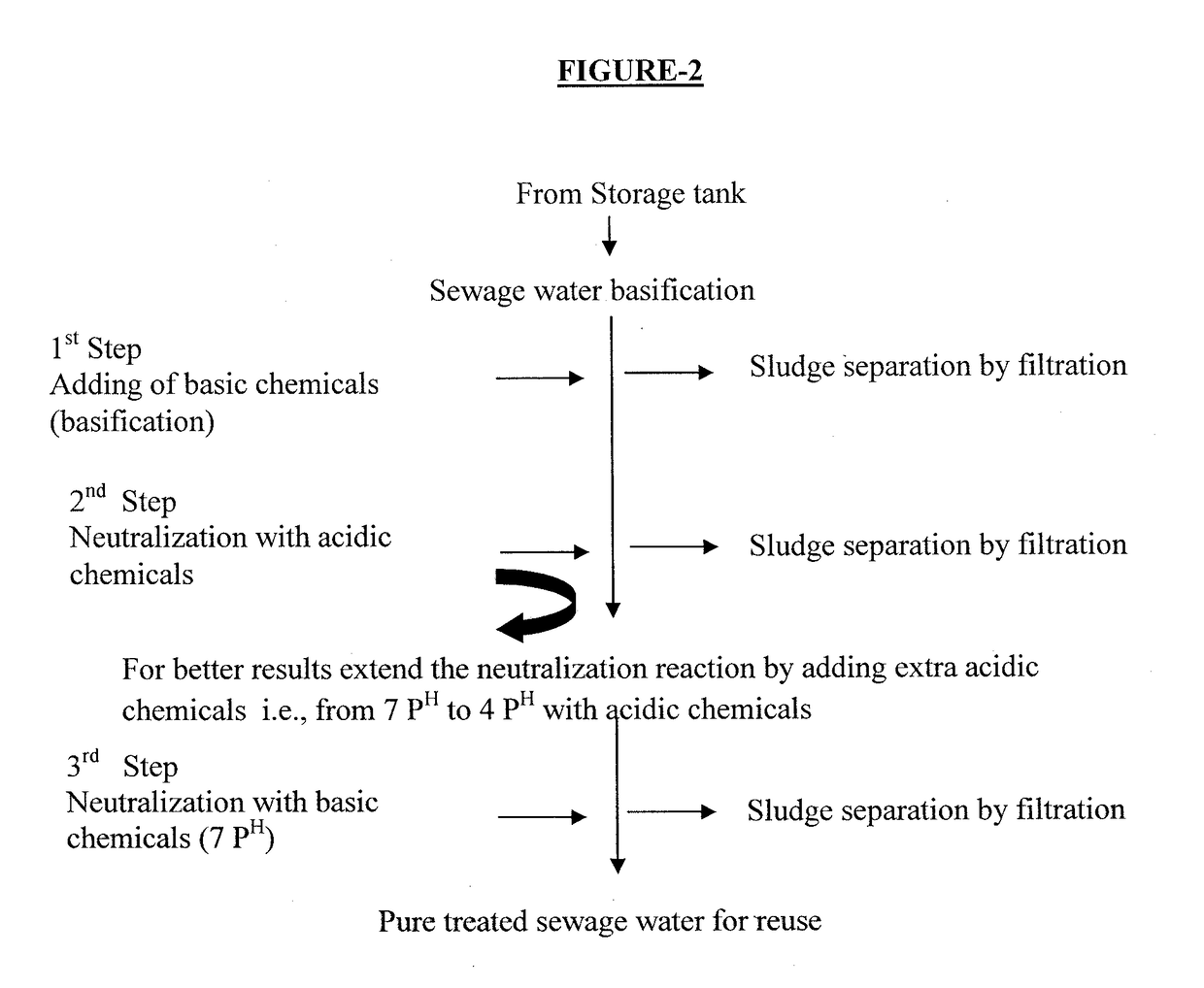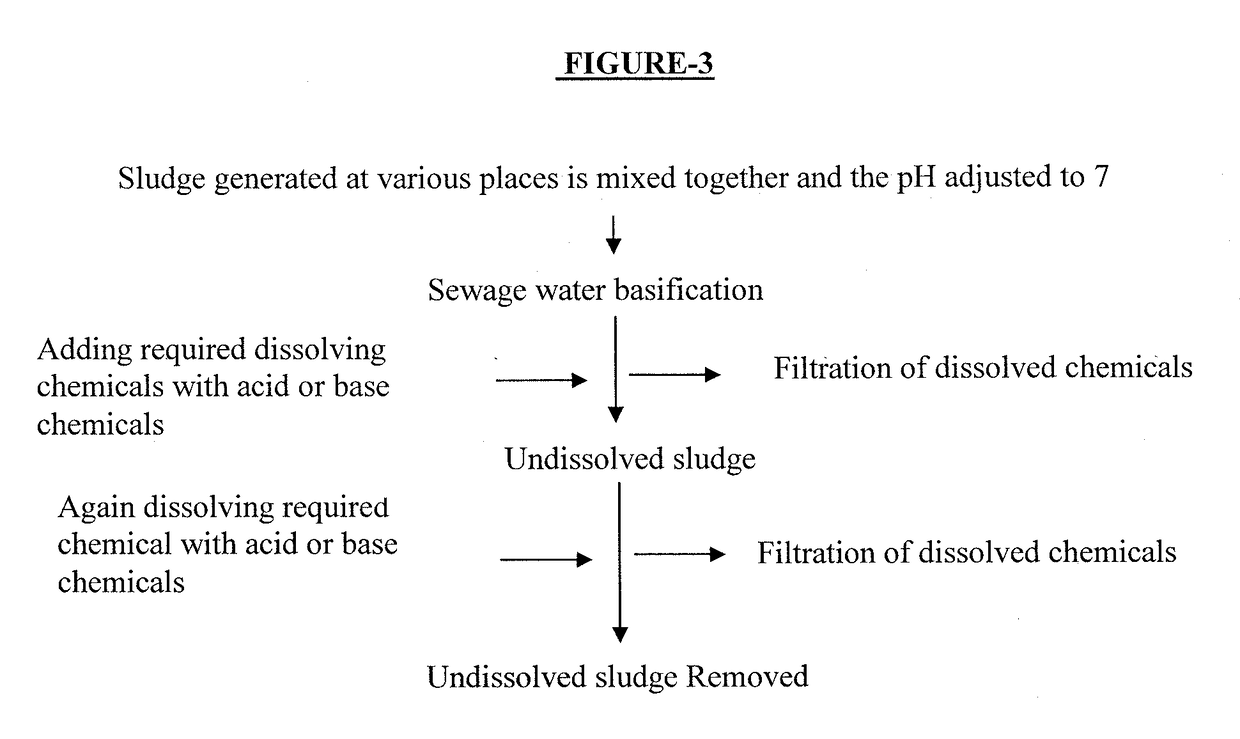Chemical treatment process of sewage water
- Summary
- Abstract
- Description
- Claims
- Application Information
AI Technical Summary
Benefits of technology
Problems solved by technology
Method used
Image
Examples
example
[0063]Sewage water is added to a tank, and then acidic chemical (aluminum sulfate 1:2% dilution with water) is added to the sewage water, with stirring, until the PH reaches acidic reaction of a PH of from 5.5 to 4.0. The mixture is allowed to settle for 30 minutes and sludge settles to the bottom.
[0064]After 30 minutes, basic chemical (calcium hydroxide always in wet form that is 1:3% dilution) is added to the separated acidic sewage water, until basic reaction reaches PH 7.5 to 8.0. The mixture is stirred well and allowed to settle for 30 min, where sludge settles to the bottom.
[0065]Water is removed from the tank and the settled sludge is shifted to a sand filter bed for drying.
If acidic PH reaches more than 4.0, basic chemical is added until the PH reaches from 7.5 to 8.0.
If basic PH reaches more than 8.0, acidic chemical is added until the PH reaches from 7.5 to 8.0.
[0066]A sample of raw sewage water sample used in the example was analyzed before treatment and then following tr...
PUM
 Login to View More
Login to View More Abstract
Description
Claims
Application Information
 Login to View More
Login to View More - R&D
- Intellectual Property
- Life Sciences
- Materials
- Tech Scout
- Unparalleled Data Quality
- Higher Quality Content
- 60% Fewer Hallucinations
Browse by: Latest US Patents, China's latest patents, Technical Efficacy Thesaurus, Application Domain, Technology Topic, Popular Technical Reports.
© 2025 PatSnap. All rights reserved.Legal|Privacy policy|Modern Slavery Act Transparency Statement|Sitemap|About US| Contact US: help@patsnap.com



